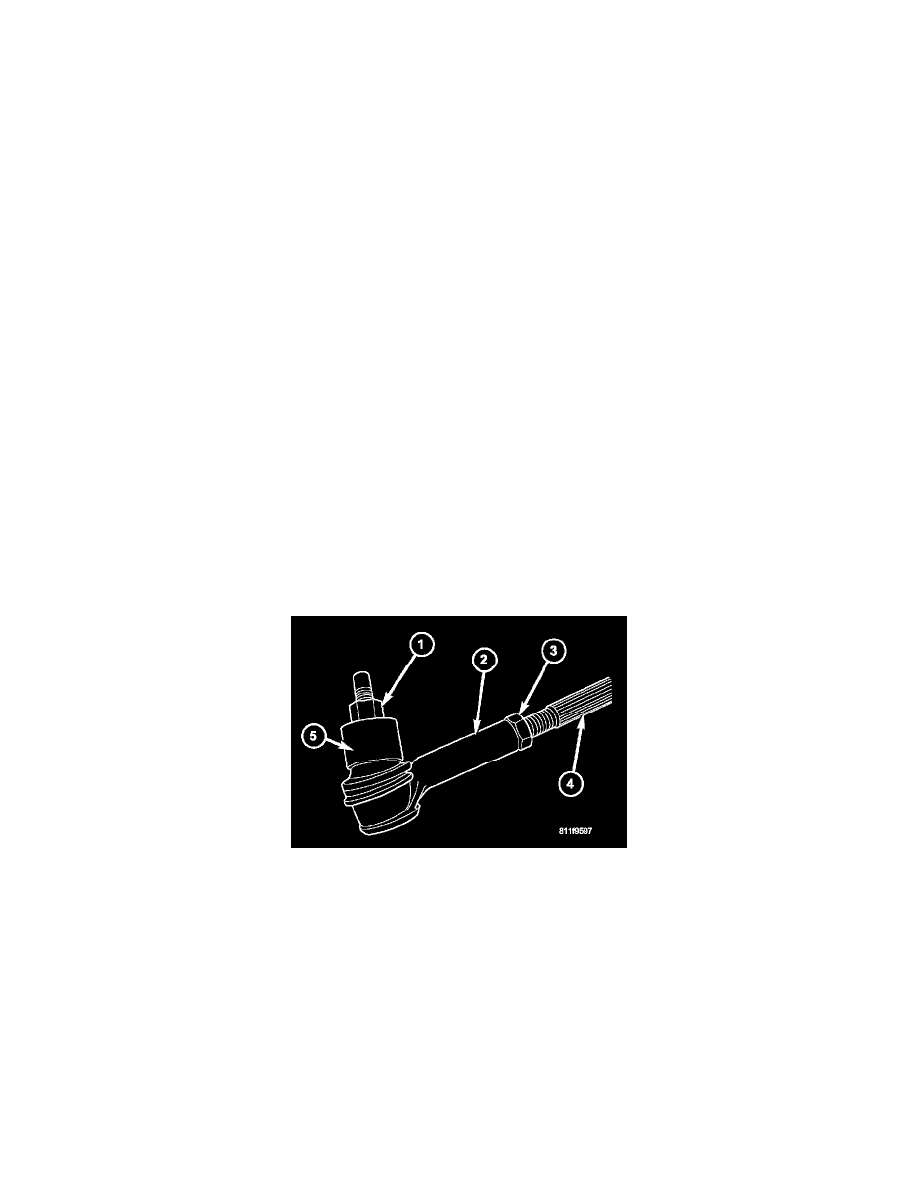Dakota 2WD V8-4.7L VIN J (2005)

Alignment: Service and Repair
WHEEL ALIGNMENT
HEIGHT MEASUREMENT
The vehicle suspension height MUST be measured and adjusted before performing wheel alignment procedure. Also when front suspension
components have been replaced. This measure must be performed with the vehicle supporting it's own weight and taken on both sides of the vehicle.
FRONT RIDE HEIGHT MEASUREMENT
1. Inspect tires and set to correct pressure.
2. Jounce the front of the vehicle.
3. With vehicle on level ground or hoist, make the following measurements:
a. Front wheel spindle (center) to ground vertical distance.
b. Measure the center of front face of bolt on the rear leg of lower control arm and the center of front face of front leg of control arm to ground
vertical distance and take the average height.
c. Difference between spindle and control arm bolt to ground average distance should be 71 mm ± 6 mm. Note that the control arm bolt is lower
than the spindle.
4. After making any ride height adjustment, roll vehicle preferably jouncing it also, to relieve camber Effects and then re-measure Lower control arm
bolt to ground height.
5. Repeat the previous steps until the ride height is within specifications.
REAR RIDE HEIGHT MEASUREMENT
1. Inspect tires and set to correct pressure.
2. Jounce the front of the vehicle.
3. With vehicle on level ground or hoist, make the following measurements:
a. Distance from the landing pad of the jounce bumper on the axle side to the jounce bumper cup lip of the frame side.
b. The difference between the jounce bumper landing pad and the jounce bumper cup lip the reading should be 148 mm ±10 mm for 9.25 axle,
154 mm ±10 mm for 8.25 axle.
TOE ADJUSTMENT
SUSPENSION HEIGHT MEASUREMENT MUST BE PERFORMED BEFORE AN ALIGNMENT.
The wheel toe position adjustment is the final adjustment.
1. Start the engine and turn wheels both ways before straightening the wheels. Secure the steering wheel with the front wheels in the straight-ahead
position.
2. Loosen the tie rod jam nuts (3).
NOTE: Each front wheel should be adjusted for one-half of the total toe position specification. This will ensure the steering wheel will be
centered when the wheels are positioned straight-ahead.
3. Adjust the wheel toe position by turning the inner tie rod (4) as necessary
4. Tighten the tie rod jam nut (3) to 75 Nm (55 ft. lbs.).
5. Verify the specifications.
6. Turn off engine.
CAMBER, CASTER AND TOE ADJUSTMENT
Camber and caster angle adjustments involve changing the position of the lower control arm with the slots in the frame brackets to move the lower
control arm inwards or outwards for proper adjustment. This can be achieved by using a socket on the head of the cam bolt and turning clockwise or
counterclockwise to achieve the proper specification.
NOTE: Both front and rear lower control arm cam bolts are adjustable.
